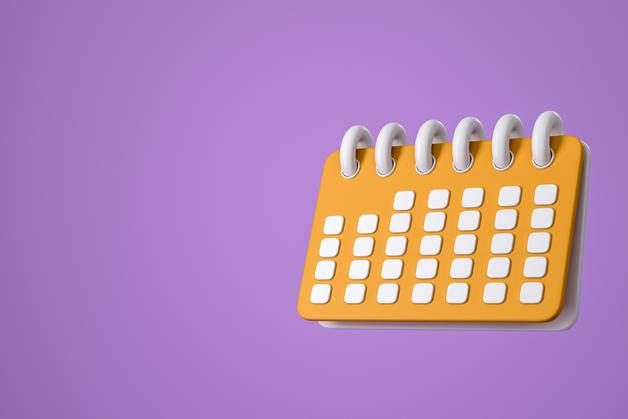You want to know exactly how far along you are, which week you are in, and when to expect each scan or screen. Then an app says one number and your clinician says another. Confusing, right. The good news, the difference has a simple source. Many tools display the baby’s developmental or fetal age, while clinics use gestational age counted from the first day of your last period. That two week gap explains the mismatch. By understanding pregnancy weeks vs gestational weeks, you can set your app correctly, ask the right questions, and feel more confident when dates shift. Here is the plan, clarify the terms, show how dating is calculated, explain when clinicians adjust the official date, and give you step by step examples for natural conception and IVF. If you are wondering which number to trust for testing windows, screens and delivery planning, use the clinic’s reference. Want the same number in your app, we will show you how.
pregnancy weeks vs gestational weeks, what parents should know — ≈200 words
Quick takeaways
- Clinicians usually speak in gestational age (GA), counted from the first day of your period, not from conception. Many apps show fetal age, which is often GA minus about two weeks.
- In some countries, you may see weeks of amenorrhea or SA, which equals GA. You may also see weeks of pregnancy or SG, which equals fetal age.
- The dating method drives timing for screenings, the anatomy scan, growth assessments, and decisions about induction.
- A first trimester ultrasound dating scan that measures crown rump length (CRL) often becomes the official clock if it disagrees with the period date beyond expected variability.
Immediate actions for parents
- Record exact LMP first day, the date of your positive pregnancy test, early ultrasound reports with CRL and reported GA, and IVF or embryo transfer documents if applicable.
- Ask, which date set my estimated due date (EDD), and will you use LMP, ultrasound, or the IVF transfer date going forward.
- Keep app settings consistent, choose LMP based mode or ultrasound adjusted mode, and update if your clinic changes the official EDD.
A clinician perspective, ACOG and NHS encourage a standardized LMP framework first, then early ultrasound to refine the official date when there is a meaningful discrepancy. That approach reduces confusion and keeps everyone aligned.
Definitions and key terms — ≈300 words
gestational age definition
Clinics chart GA in weeks and days, written as weeks plus days, for example 12 plus 3 means 12 weeks and 3 days. GA traditionally starts on the first day of your last menstrual period because that date is concrete and easy to share. When an early scan suggests a more accurate dating, your team adopts the estimated gestational age (EGA) derived from measurements, and that becomes the working reference for the rest of your care.
fetal or embryonic age
Fetal or conceptional age starts at fertilization. In a natural cycle, fertilization usually happens about two weeks after the start of the period, so fetal age is approximately GA minus two weeks. That numeric offset explains why apps and clinic notes can diverge even when everyone is correct. In IVF, fertilization and embryo age are known, so teams map those lab dates into the GA framework by adding 14 days to the fertilization or retrieval date.
regional terms, SA and SG
- SA, weeks of amenorrhea, starts on the LMP date, so SA equals GA. Some charts may describe overall pregnancy length as 41 SA. Different regions prefer different labels, the biology is the same.
- SG, weeks of pregnancy, refers to the baby’s developmental age from fertilization, equivalent to fetal age. It can feel intuitive, but with irregular cycles, accuracy improves once ultrasound data are available.
- Easy link, SA or GA equals SG plus two weeks.
related terms to know
- last menstrual period dating or LMP, the usual starting point for GA or SA.
- Naegele’s rule, add 280 days to LMP for an initial EDD.
- estimated date of confinement (EDC), another name for EDD.
- crown rump length (CRL), the main first trimester measurement for dating.
- postmenstrual age (PMA), used in neonatal care, PMA equals GA at birth plus postnatal days.
You may also hear menstrual age or conception date, both are descriptive shortcuts rather than separate systems.
How dating works, lmp, ultrasound and conversion rules — ≈350 words
lmp based dating and Naegele’s rule
A simple three step approach sets an initial EDD.
- Identify the first day of your LMP.
- Apply Naegele’s rule, EDD equals LMP plus 280 days.
- If your cycle length differs from 28 days, adjust by the difference, for example cycle length minus 28 days added to the EDD.
Assumptions and common errors
- Naegele’s rule assumes ovulation on day 14. If your cycles are irregular, if ovulation was later than mid cycle, or if implantation spotting was mistaken for a period, LMP based dating can drift.
- Why start with LMP or SA anyway, it provides a shared anchor while the first trimester scan fine tunes the EDD.
- Common pitfalls include misremembered dates or using the start of bleeding that was not a true period.
first trimester ultrasound dating
- The first trimester dating ultrasound measures CRL between roughly 7 and 13 plus 6 weeks, and within that window the variation is smallest, often about five to seven days.
- When the ultrasound GA and the LMP GA differ beyond expected variability, the ultrasound EGA usually becomes the official reference because it is more precise at that stage.
converting GA and fetal age
A simple rule holds most of the time, fetal age is approximately GA minus two weeks. If you see SA, treat SA as GA.
Worked conversions in weeks plus days
- GA or SA 12 plus 4 becomes fetal age about 10 plus 4.
- Fetal age 6 plus 3 becomes GA or SA about 8 plus 3.
- An app shows fetal age 7 plus 0, the clinic will likely chart GA or SA as 9 plus 0.
examples of calculation changes
If your LMP was January 1 and a 12 week CRL on March 25 indicates you are exactly 12 plus 0 on that day, your new EDD is March 25 plus the remaining weeks to reach 40 weeks. Your screening windows then shift to align with that new EDD. You might wonder, does this change anything I already did. No, past labs remain valid, future scheduling aligns to the updated clock.
Throughout, remember the phrase pregnancy weeks vs gestational weeks, it signals which clock is running, the embryonic development clock or the clinical GA clock.
IVF and assisted reproduction dating explained — ≈220 words
how clinics calculate gestational age after IVF or embryo transfer
IVF anchors pregnancy age to lab events. Clinics commonly add 14 days to the fertilization or oocyte retrieval date to map into GA. When an embryo is transferred on Day 3 or Day 5, teams use transfer date formulas that incorporate embryo age.
- Common formula, EDD equals embryo transfer date plus 266 minus embryo age in days.
- For a Day 3 transfer, EDD equals ET plus 263 days. For a Day 5 transfer, EDD equals ET plus 261 days.
why IVF dating is often more precise
Because the fertilization time and embryo age are recorded, IVF pregnancies have a solid anchor that minimizes recall errors. Early scans still confirm growth and viability, but re dating is uncommon unless growth deviates from expectations.
sample scenarios
- Fresh Day 3 transfer on January 4, EDD equals January 4 plus 263 days, for example September 23.
- Frozen Day 5 transfer on April 15, EDD equals April 15 plus 261 days, for example January 1 of the next year.
When comparing pregnancy weeks vs gestational weeks in an IVF context, the same two week offset concept applies, only now the fertilization date is known, which makes conversions straightforward.
When and why dates get adjusted — ≈200 words
clinical reconciliation rules
Early in pregnancy, if a first trimester CRL based GA differs from the LMP GA beyond expected variability, often five to nine days depending on GA, clinicians will update the official EDD to the ultrasound derived date. IVF pregnancies typically keep the lab based dating and are only re dated when measurements repeatedly suggest a different trajectory.
practical impact of date changes
- What moves, timing for first trimester combined screening including nuchal translucency and serum markers, noninvasive prenatal testing windows, the anatomy scan, glucose screening, and induction planning tied to term thresholds.
- What stays the same, the medical record preserves the original LMP and any EDD changes with the reason documented. Prior test results remain part of your record, future scheduling and growth curves align to the updated EDD.
Pregnancy weeks vs gestational weeks will match once your app follows the new EDD. You can switch your app to EDD mode to eliminate future confusion.
Clinical milestones and care tied to weeks — ≈220 words
screening and test timing by gestational weeks
- 10 to 13 plus 6 weeks, NT ultrasound and first trimester combined screening with PAPP A and free beta hCG. Many centers offer NIPT from 10 weeks GA.
- 18 to 22 weeks, anatomy scan evaluates fetal structure and confirms dating.
- 24 to 28 weeks, screening for gestational diabetes with a 1 hour glucose challenge followed by a 3 hour test if indicated, plus repeat anemia screening.
- 35 to 37 weeks, group B strep culture to plan intrapartum prophylaxis.
- Ongoing, targeted growth scans or surveillance if risk factors are present.
term categories and clinical significance
- Preterm, less than 37 weeks.
- Early term, 37 weeks plus 0 days to 38 weeks plus 6 days.
- Full term, 39 weeks plus 0 days to 40 weeks plus 6 days, often associated with the best outcomes for most infants and the preferred timing for elective procedures.
- Late term, 41 weeks plus 0 days to 41 weeks plus 6 days.
- Postterm, 42 weeks or more.
In SA based regions, the overall pregnancy length may be described as 41 SA. The mapping to GA categories is direct. This is another place where pregnancy weeks vs gestational weeks comes up in conversation, and asking which clock your team is using helps align expectations.
Common confusions and patient questions — ≈250 words
why apps or friends show different weeks
Different apps accept different inputs, some start with the LMP, others let you enter ovulation or embryo transfer, and some display fetal or conceptional age. If your app is set to ovulation or fertilization, it will show a number about two weeks behind your clinic GA. In some regions you may see SA for the clinic number and SG for the baby’s age, remember SA equals GA and SG is about GA minus two weeks.
typical parent scenarios clarified
Scenario, my app says 7 weeks and my clinic says 9 weeks. The most likely explanation, your app shows fetal age at 7 weeks and your clinic charts GA at 9 weeks based on LMP or ultrasound. Use the conversion, fetal age plus two weeks equals GA or SA. If your team adopted an ultrasound based EDD, use that date to schedule screens, and consider switching your app to EDD mode so the number matches.
You might ask, what if I am sure I ovulated late. Ultrasound in the first trimester tends to resolve that question more accurately than memory or luteinizing hormone kit interpretations alone.
questions to ask your provider
- How did you determine my GA today, LMP, ultrasound, or IVF timing.
- Is my EDD official for scheduling, and if it changes, which date will we use for tests and delivery planning.
- Can you note the GA in weeks plus days so I can enter the same number in my app.
A clinician note worth sharing, an obstetric clinician familiar with ACOG and NHS guidance often says, we start with LMP to coordinate care, then we refine the date when early ultrasound offers better precision.
Tools, calculators and worked examples parents can use — ≈300 words
using a pregnancy wheel and online calculators
A pregnancy wheel or an online calculator typically asks for LMP, cycle length, and sometimes cycle regularity. Some tools label outputs as GA or SA, others display fetal age or SG. For IVF, enter retrieval date, fertilization date, embryo age, and transfer date. Select LMP based or ultrasound adjusted output according to your clinic’s approach. If an early scan re dates the pregnancy, switch to the ultrasound derived EDD for planning. If you like paper tools as a double check, many clinics still use the wheel for quick cross checks.
three worked examples
1) LMP known natural conception, Naegele’s rule
LMP equals 2024 02 01 with a regular 28 day cycle.
EDD equals LMP plus 280 days, 2024 11 08.
Use this for initial scheduling until ultrasound confirms or revises the date.
2) ultrasound adjusted dating example
LMP based EDD equals 2024 11 08. Early ultrasound on 2024 04 28 reports CRL consistent with GA 12 plus 0.
New EDD equals April 28 plus 28 weeks, 2024 11 16.
Because the ultrasound difference exceeds expected variability, the clinic adopts the ultrasound EDD and reschedules tests accordingly.
3) IVF example, Day 5 transfer
Embryo transfer 2024 02 06, Day 5 embryo. EDD formula, ET plus 261 days.
EDD equals 2024 02 06 plus 261 days, 2024 11 24.
The clinic records EDD based on embryo age and will confirm growth with the early scan.
recommended app settings and record keeping tips
- Choose an app that allows ultrasound adjustment and IVF or transfer date entry. If it offers SA versus SG display, select the one that matches your clinic notes.
- Keep screenshots or PDFs of ultrasound reports and IVF records in a secure folder or health app.
- Record GA or SA in weeks plus days, and note which method set the official EDD.
These steps keep pregnancy weeks vs gestational weeks aligned across your phone, your notes, and your care team.
Special situations and edge cases — ≈220 words
irregular cycles, PCOS and recent contraception stop
When cycles are irregular as with PCOS, or ovulation resumes after stopping contraception, the LMP may not reflect the true conception timing. Early first trimester CRL dating reduces uncertainty and provides a reliable EDD. Use the SA or GA framework to stay coordinated while ultrasound refines the date. If you used ovulation predictor kits, share those dates as supportive context.
multiples, donor eggs and frozen embryos
For multiples or donor egg cycles, dating follows the fertilization or transfer event. Clinics typically use the known embryo age and transfer date to calculate GA. Twins or triplets from the same transfer share the same EDD, recognizing that growth and delivery timing may differ and often require closer surveillance.
late presentation, bleeding, or uncertain LMP
If you present for care later in pregnancy, or you had bleeding that could have been implantation or a true period, ultrasound becomes central. In the second or third trimester, clinicians use fetal biometry, for example head size, abdominal circumference, and biparietal diameter (BPD), to estimate GA, although the window of error is wider. If uncertainty persists, your team plans care with more frequent monitoring and flexible scheduling.
In all these scenarios, the theme of pregnancy weeks vs gestational weeks repeats, and the path forward is the same, pick the most reliable anchor and follow it consistently.
How dating affects decisions and interventions — ≈200 words
screening, treatment windows and medication timing
Accurate GA ensures screening tests are performed within valid windows, for example NT at around 11 to 14 weeks and glucose screening at 24 to 28 weeks. For a threatened preterm birth, timing of antenatal corticosteroids typically between 24 and 34 weeks depends on an accurate GA. Misdating can lead to missed opportunities or unneeded treatment. Precision here protects both parent and baby.
growth assessment and delivery planning
Growth percentiles and estimated fetal weight are always interpreted against GA. A baby misdated by even a week or two can be labeled small or large for GA incorrectly, which can change monitoring frequency, testing, or delivery timing. Induction planning and neonatal preparation for possible preterm delivery rely on a consistent GA across the record. Another reason to keep pregnancy weeks vs gestational weeks aligned in every tool you use.
Communicating clearly with your provider — ≈150 words
what to share with your care team
Offer your LMP first day, typical cycle length, any ovulation tracking or temperature chart details, the date of a positive pregnancy test, and any ultrasound or IVF or transfer records. Bring printed or electronic copies of ultrasound reports that show CRL and the GA reported by the sonographer. If you used a home conception or due date calculator, mention its inputs so the team can align with or correct them.
how to read clinical notations
- 12 plus 3 means 12 weeks and 3 days GA.
- EGA 19w2d means estimated gestational age 19 weeks and 2 days.
If you see SA in your notes, treat it as the same number as GA. You can ask your clinician which method produced that number, LMP, ultrasound, or IVF, so you can enter the same reference in your app settings. For NICU notes after birth, you may see postmenstrual age (PMA), which equals GA at birth plus days of life.
Visuals, tables and callouts to include — ≈140 words
recommended visuals
- Timeline infographic, LMP to ovulation to conception to implantation to GA or SA versus fetal age or SG, with arrows that show how dates can shift. Alt text, timeline from LMP through conception and differences between gestational age and fetal age.
- Table, side by side sample dates showing LMP based EDD, ultrasound adjusted EDD, and IVF derived EDD with short notes. Alt text, table comparing EDDs calculated by LMP, ultrasound, and IVF transfer.
- Conversion sidebar, quick chart showing GA or SA mapped to fetal age or SG, FA or SG equals GA or SA minus two weeks. Alt text, conversion table mapping GA to SG.
callouts and sidebars
- Quick tips, what changes when EDD changes, how to enter dates in your app, when to ask for a re date.
- Accessibility friendly alt text for each visual to support screen reader use.
These help make pregnancy weeks vs gestational weeks instantly visible.
SEO and metadata guidance for the writer — ≈120 words
keyword and meta suggestions
Primary keyword, pregnancy weeks vs gestational weeks. Related, gestational age in weeks, weeks pregnant, LMP vs ultrasound, ultrasound gestational age vs LMP gestational age, week by week fetal development, week by week pregnancy milestones, conception date, gestation length, term pregnancy, preterm birth, post term pregnancy, fetal biometry by week.
Meta title, Pregnancy weeks vs gestational weeks, what is the difference.
Meta description, Learn the difference between pregnancy weeks vs gestational weeks, how dating works LMP, ultrasound, IVF, and why it matters for care.
formatting and tone notes
Use short paragraphs, a clinician quote for authority, numbered calculation steps, and cite ACOG and NHS when summarizing guideline based recommendations. Keep language empathetic and non directive. Encourage parents to save dates, ask clarifying questions, and align their app with the clinic EDD.
Writer checklist and editorial requirements — ≈160 words
checklist
- Keep the exact phrase pregnancy weeks vs gestational weeks in H1 and in the first H2.
- Ensure each H2 contains at least two H3s, merge or expand if there is only one.
- Include per section word counts to reach about two thousand words total.
- Add at least three worked examples, LMP, ultrasound re dating, IVF Day 5.
- Include a conversion sidebar that maps GA or SA to fetal age or SG.
- Add one or two clinician quoted lines or ACOG or NHS references to support trust.
- Include a clear medical disclaimer, information only, consult your healthcare provider for personal care.
- Use supportive phrasing such as you can, consider, and try, and keep the tone compassionate and precise.
- Clarify regional terminology SA and SG, reassure that SA equals GA and SG is about GA minus two weeks.
- Bold a limited set of key terms, for example gestational age (GA), fetal age, Naegele’s rule, estimated due date (EDD), crown rump length (CRL), and similar, once each.
Key takeaways
- Pregnancy weeks vs gestational weeks reflects two clocks, fetal development and clinical GA. The clinic number usually starts at your LMP and is two weeks ahead of fetal age.
- Early first trimester ultrasound that measures CRL often sets the official EDD when it meaningfully disagrees with LMP.
- The dating method influences screening windows, growth interpretation, and delivery planning. Align your app with the clinic EDD to avoid scheduling confusion.
- Save LMP, positive test date, ultrasound reports, and IVF records, and ask which date your team will use.
- For IVF, EDD comes from lab dates and transfer day, then ultrasound confirms growth.
Support exists at every step. Your midwife or obstetric clinician can personalize timing, discuss uncertainties, and adjust plans as needed. For tailored tips, week specific checklists, and free health questionnaires for children, you can download the Heloa app at https://app.adjust.com/1g586ft8.
Medical disclaimer: This information is for educational purposes and does not replace personalized medical advice. Discuss your specific dating and care plan with your healthcare provider.
Questions Parents Ask
Can I trust an online “pregnancy weeks vs gestational weeks” calculator — which settings should I use?
Many calculators are helpful, but their accuracy depends on the inputs. Enter your first day of LMP and cycle length for LMP‑based results. If you have an early ultrasound, choose the option that lets you use an ultrasound‑adjusted EDD. For IVF, enter the retrieval/fertilisation or transfer date and embryo age (Day 3 or Day 5) so the tool applies the correct clinic formulas.
Look at the label on the result: it may show gestational age (GA) / weeks of amenorrhea (SA) or fetal/conception age (sometimes called SG). If the calculator shows fetal age, add about two weeks to match the clinic GA. If you feel unsure, you can save the calculator output and compare it with the ultrasound report at your appointment — your care team’s EDD will be the reference for tests and scheduling.
Is there a quick conversion chart from gestational age to fetal (conceptional) age?
Yes — a simple rule works for all dates: subtract 14 days (2 weeks) from GA to get fetal/conception age. Quick reference for common points:
- GA 6 w → fetal age ≈ 4 w
- GA 8 w → fetal age ≈ 6 w
- GA 12 w → fetal age ≈ 10 w
- GA 20 w → fetal age ≈ 18 w
- GA 28 w → fetal age ≈ 26 w
- GA 36 w → fetal age ≈ 34 w
- GA 40 w → fetal age ≈ 38 w
For precise week+day conversions, subtract 14 days (for example, GA 12+4 becomes fetal 10+4). This quick mapping helps when apps display the baby’s developmental age while your clinic uses GA.
Do pregnancy symptoms follow “weeks pregnant” or gestational age — which number reflects how I feel?
Symptoms relate to the timing of ovulation, fertilisation and pregnancy hormones, so many people notice them in line with conception (fetal) age rather than the clinical GA counted from LMP. That said, clinical care, tests and due‑date planning use GA. If your symptoms feel earlier or later than the number your app or clinician shows, try to stay reassured — individual variation is common. Keep a note of when symptoms began, your positive test date, and any ovulation tracking you used; sharing these with your clinician helps them interpret symptoms alongside ultrasound findings and set the most appropriate EDD.










